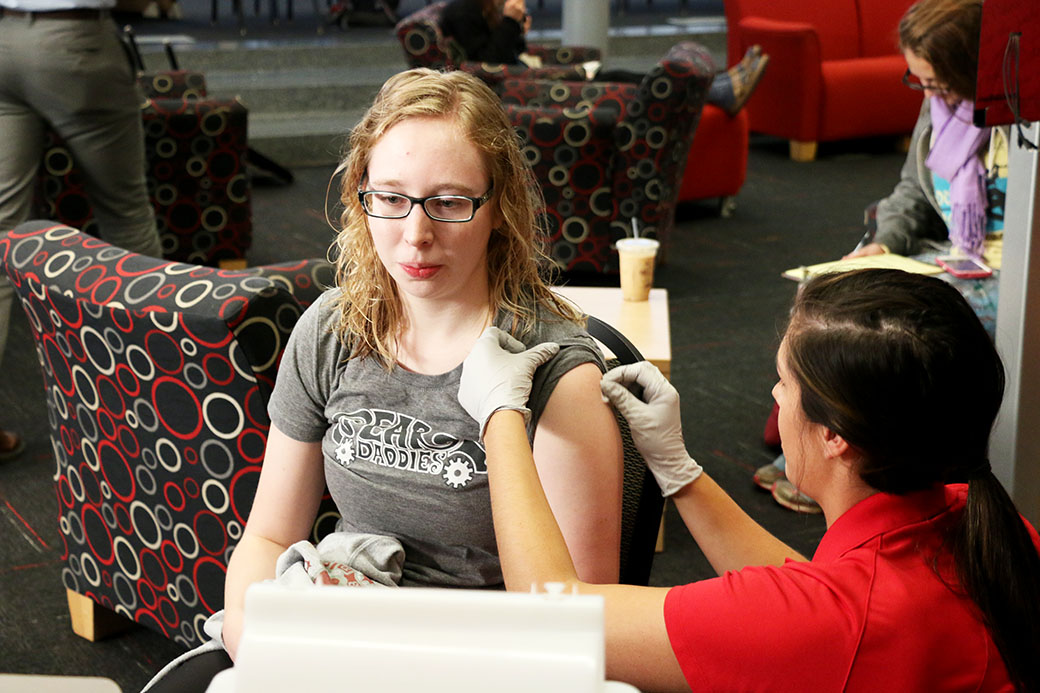
Community members, USD students prepares for flu season
As autumn comes into full swing, flu season comes along with it.
Flu season starts in October lasting until March, sometimes as late as May, said Art Pepper, a nurse practitioner at Sanford.
“Flu season starts because of the cold weather,” Pepper said. “People stay indoors and are in close proximity of each other, allowing the virus to spread easily.”
The flu is caused by an Influenza virus, according to the World Health Organization. Influenza viruses cause fever, muscle and joint pain, a sore throat, a runny nose and coughing.
Pepper said the best thing people can do to protect themselves from the virus is to get vaccinated.
“People who get vaccinated don’t get infected as much as those who are unvaccinated,” he said. “If they do get infected, the symptoms aren’t as bad.”
There are different kinds of flu shots patients can get, according to Pepper.
“There’s the quadrivalent, which protects against four different types of strains,” he said. “There’s a high-dose vaccine, which is targeted towards individuals aged 65 or older, because they have a weakened immune system, and those who have chronic health conditions.”
Anyone afraid of getting shots can get a subcutaneous shot, which goes just beneath the skin, instead of the muscle.
While in years past a mist was available to be administered nasally, Pepper said there was an issue with effectiveness and has been discontinued in the U.S.
Pepper also said that vaccinations are a guessing game, because there are different strains of the flu virus.
“Experts will try to choose vaccines that will protect us the most in any given year,” he said.
Pepper said the best advice for anyone considering getting a flu shot is to “just do it.”
“Last year I saw those who didn’t get vaccinated and later got the flu became very ill and some were even hospitalized,” Pepper said.
The cost for flu shots are $25, although most insurance plans cover the cost, Pepper said.
“The $25 is small compared to covering the cost of treatment,” he said.
Mary Merrigan, with Student Health Services said over 2,000 people in the Vermillion community got vaccinated last flu season.
“Most of the students in health services get vaccinated so they don’t communicate the disease,” Merrigan said. “We also connect with coaches of the various athletic departments to get the athletes vaccinated.”
Sanford was in the MUC Pit Lounge last week, helping students and staff
get vaccinated.
Aileen Maw, a senior nursing major, got vaccinated during the event.
“I’m in the clinical setting a lot so I got a shot to help protect myself and others,” Maw said.
More than 70 people got vaccinated during the event in the MUC and there will be more events held on Oct. 18 in the MUC and Oct. 26 at the Wellness Center.
“It’s one of the best decisions you can make when it comes to your health,” Pepper said. “It takes minutes and can be the difference between being sick for weeks or spending time in a hospital for an easily
preventable virus.”

